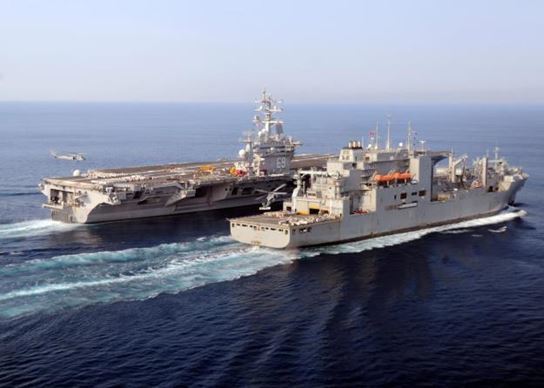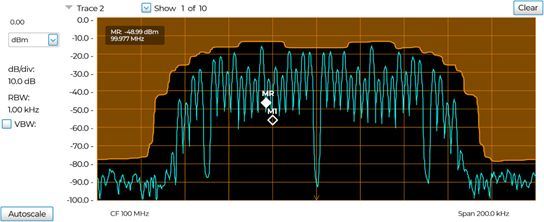If you are involved in military, aerospace or defense and have been around radar and communication systems, with high-power RF transmitters and high-gain antennas, you are probably aware of the many risks associated with Radio Frequency Radiation (RFR) Hazards. RF emissions from these systems have the potential to cause catastrophic damage to operations and maintenance personnel, ordnance and fuels, and associated equipment.

If you are responsible for Radiation Hazards (RADHAZ), Emission Control (EMCON), Communications-Electronics Command (CECOM) or the management of electromagnetic environmental effects (E3), you understand that in today’s technological environment, it’s not sufficient only knowing whether systems are exceeding appropriate levels. To support daily operation to ensure security and safety, it’s more important than ever to be able to discover, locate, classify, record, and playback signals of interest through a combination of field surveying and deployed spectrum monitoring.

Government publications and others provide comprehensive information on the risks, Personnel Exposure Limits (PEL), hazard measurements, design criteria and safe operation guidelines. However, new technology advancements with increased RF emitting technology capabilities requires a higher level of RF situational awareness.
RADHAZ procedures set the fundamental requirements to mitigate risks associated with Radio Frequency Radiation (RFR). For military personnel, RADHAZ risks can be especially high when two radar emitting vehicles or ships interact with each other. As an example, when two ships approach each other, each ship needs to be aware of the potential electromagnetic radiation hazards and their required safe distances and procedures during operation. Failure to monitor the RFR present can, and has, resulted in catastrophic accidents.
Per the Navel Safety Center, RF Hazards fall into three main categories:
- Hazards of Electromagnetic Radiation to Personnel (HERP)
- Hazards of Electromagnetic Radiation to Ordnance (HERO)
- Hazards of Electromagnetic Radiation to Fuel (HERF)
Let’s take a look at each of these RF hazards:
What are Hazards of Electromagnetic Radiation to Personnel (HERP)?
HERP may result in injuries to people in environments where radar and communications systems operate. The use of high frequency transmitters and high-gain antennas, and the complicated structure and rigging aboard ships has increased the probability of voltages being present on shipboard objects such as running rigging, booms and parked aircraft. Radiation from nearby transmitting antennas may result in voltage levels that are sufficient to cause burns or shocks. These injuries may occur from direct contact with a conductive object or from a spark discharge.
What are Hazards of Electromagnetic Radiation to Ordinance (HERO)?
HERO occurs when RFR enters sensitive electrically initiated devices (EIDs), or electro-exploding devices (EEDs) and may lead to triggering an unexpected explosion. RFR energy can enter an ordnance item through a hole or crack in its skin, or through firing leads and wires. First identified in 1958, the HERO risk has increased with the increased power output and frequency ranges found in modern radio and radar transmitting equipment. According to the Navy Safety Center, “EID systems are most susceptible during assembly, disassembly, loading, unloading, and handling in RFR electromagnetic fields.” Ordnance systems are classified into three categories; HERO safe, HERO susceptible and HERO unsafe based on their probability of being adversely affected by the RFR environment.
What are Hazards of Electromagnetic Radiation to Fuel (HERF)?
HERF concerns the accidental ignition of fuel vapors by RF-induced arcs during fuel-handling operations. Fuel-handling is defined as the transferring of fuel from one container to another. While the probability of a HERF event occurring is relatively low, accidental combustion is still possible with certain conditions being present. To reduce the probability of a HERF event, a number of measures have been advised for military operations. Included among these are prescribed safe separation distances and securing transmitting radar and communication systems during fueling operations.

Mitigating RADHAZ Risk Using a Real-Time Spectrum Analyzer
To mitigate the risks for RADHAZ operations, investing in technology that provides greater RF situational awareness takes on greater importance. A portable Real-Time Spectrum Analyzer (RTSA), such as the Tektronix RSA306B or RSA500 Series, is the perfect tool for intelligent sensing to monitor EMCON compliance and complement RADHAZ safety procedures. The RTSA provides the ability to sense important signals of interest (SOIs) in a crowded spectrum and understand what RF signals exists at any given time. To monitor an area 24/7, capabilities like frequency mask triggering are preferred, as it allows the RTSA to capture any signal that violates set frequency thresholds. This is critical given the potential consequences of an EMCON violation or a RADHAZ event.
TestEquity are an approved UK partner for Tektronix
Content Source: 3 Radiation Hazards (RADHAZ) and How to Mitigate Risk | Tektronix






